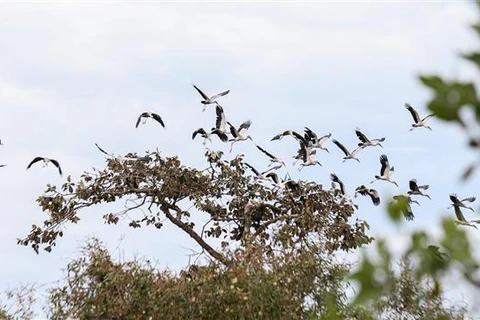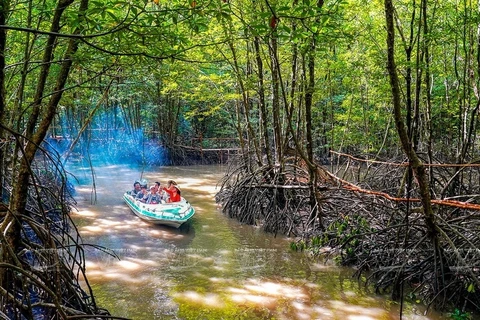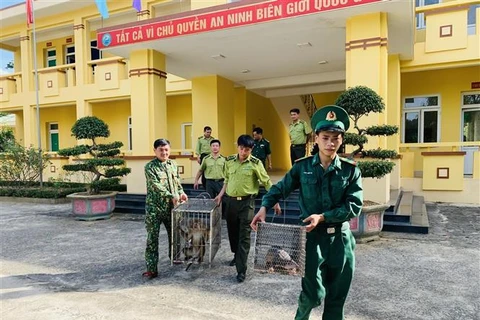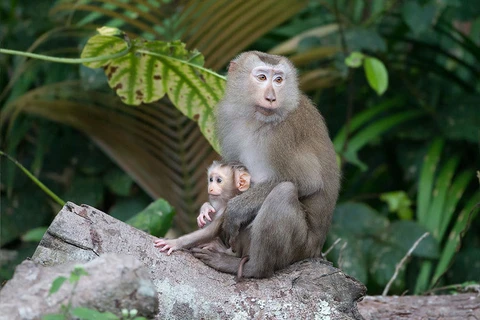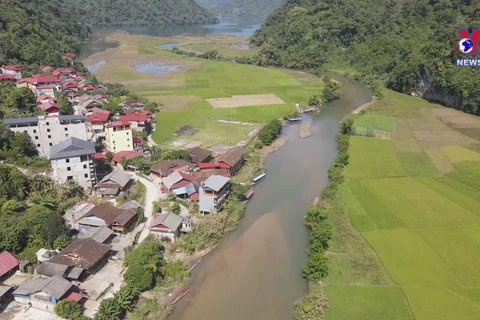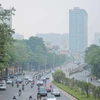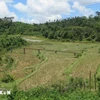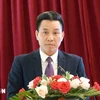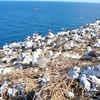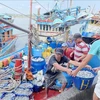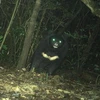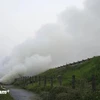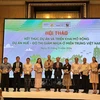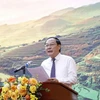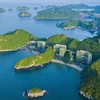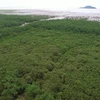Thanh Hoa (VNA) – The Ben En National Park, about 50km to the southwest of Thanh Hoa city, is a relatively popular ecotourism site home to rich biodiversity.
The park was set up in 1992 under Decision No 33/CT of the Chairman of the Ministers’ Council (now the Prime Minister) with a view to conserving the ecosystem in mountainous areas of Nhu Thanh and Nhu Xuan districts of the central province of Thanh Hoa.
Ben En is dubbed “Ha Long Bay on land” thanks to its pristine natural beauty. A highlight of its magnificence is Ben En Lake, which covers an area of about 4,000 hectares and is tens of metres deep. The lake, consists of Thuong (Upper) and Ha (Lower) lakes, is located at around 200 metres above sea level and has a still surface with clear water all year round.
With a total area of 14.734 hectares, the Ben En National Park boasts a combination of diverse terrains from mountains, rivers, streams to lakes, creating different types of ecosystems, especially the tropical evergreen forest ecosystem on low earth and karst mountains, and the river, stream, and lake ecosystems.
The ecosystem diversity has resulted in biological diversity, blessing the park with a large number of strictly conserved fauna and flora species. Recent surveys show that Ben En is home to six flora divisions with 1,389 vascular plant species that belong to 650 genera and 173 families, including 29 species in the International Union for Conservation of Nature (IUCN) Red List and 42 in the Vietnam Red Data Book.
The biodiversity of the Ben En National Park has received high appreciation from international scientists. After a trip to this place, Dr. Manfred Nienisch, general director of the tropical forest foundation OroVerde, wrote in the park’s commemorative book that Vietnam boasts rare biodiversity, and that only few countries in the world are home to such diversity of wild fauna and flora species.
Given the park’s rich biodiversity, its Management Board recently carried out a scientific project on surveying and assessing the situation and conserving and sustainably developing medicinal plants in Ben En from 2020 to 2022.
Among a number of rare species here, many are valuable medicinal plants. Due to the plants’ high economic value, local residents exploited but did not re-planted them, leading to the gradual loss of those flora species.
Nguyen Dinh Hieu, Deputy Director of the Ben En National Park Management Board, said so far, the project has identified the distribution of and threats to the endemic and rare medicinal plants with high economic value.
Staff of the project have made a list of 374 rare medicinal plant species belonging to 119 families, collected and created 450 samples, and drawn distribution maps of some species. They have managed to produce seedlings and carried out models for planting “hoai son” (Rhizoma Dioscoreae), “thien nien kien” (Rhizoma Homalomenae occultae), “tho phuc linh” (Smilax glabra).
In the time ahead, the Park Management Board will study to identify species of medicinal plants and gather local residents’ knowledge about the plants. Besides, they will distribute 2,000 leaflets about some rare medicinal plants, organise communication meetings in 26 hamlets in the park’s core and buffer zones, and hold training courses for 1,300 local residents and cadres to improve their conservation knowledge.
The Management Board is planning to publish a book on some medicinal plants and make videos on the topic. They will also develop plant cultivation techniques, aiming to create 9,000 seedlings of “hoai son”, “thien nien kien”, and “tho phuc linh” to seed plants in buffer zones.
The project implementation has reportedly helped the board conserve and develop rare medicinal plants, thus contributing to material supply for medicine production and biodiversity conservation./.


